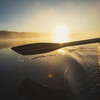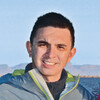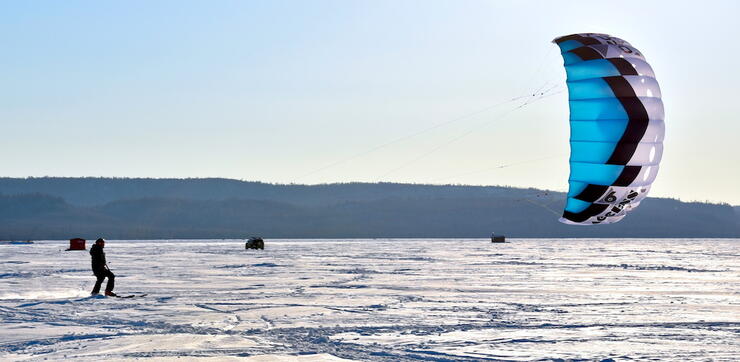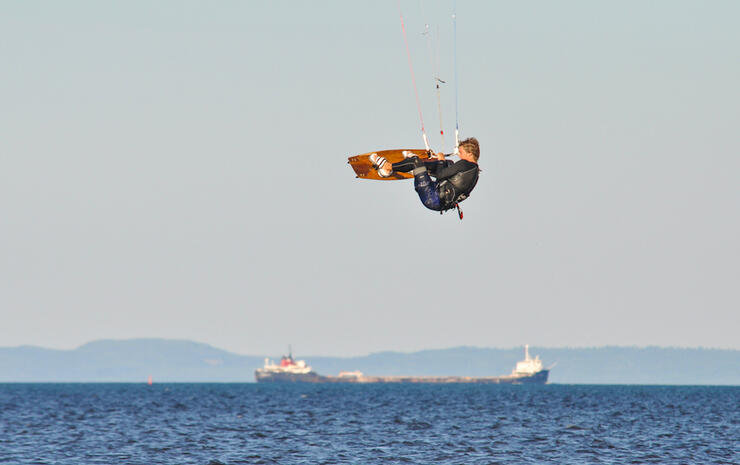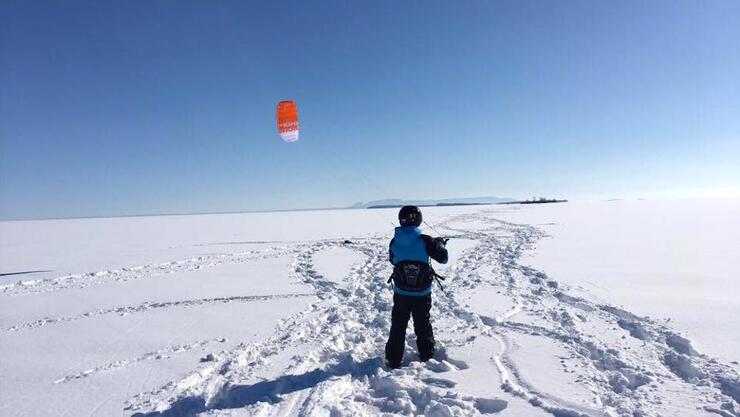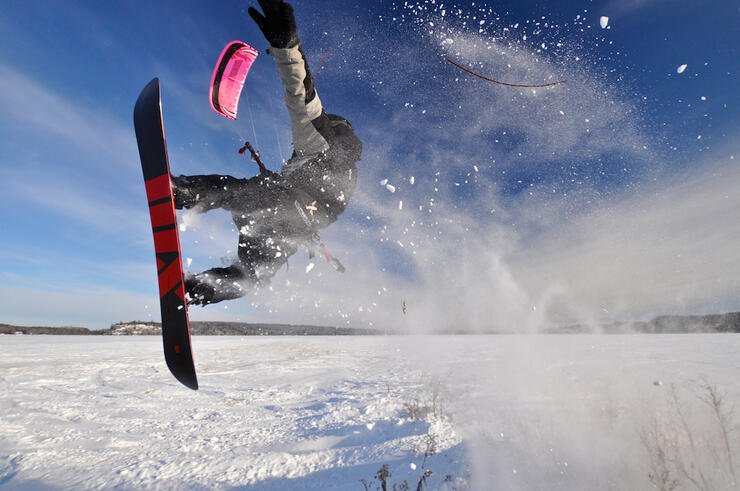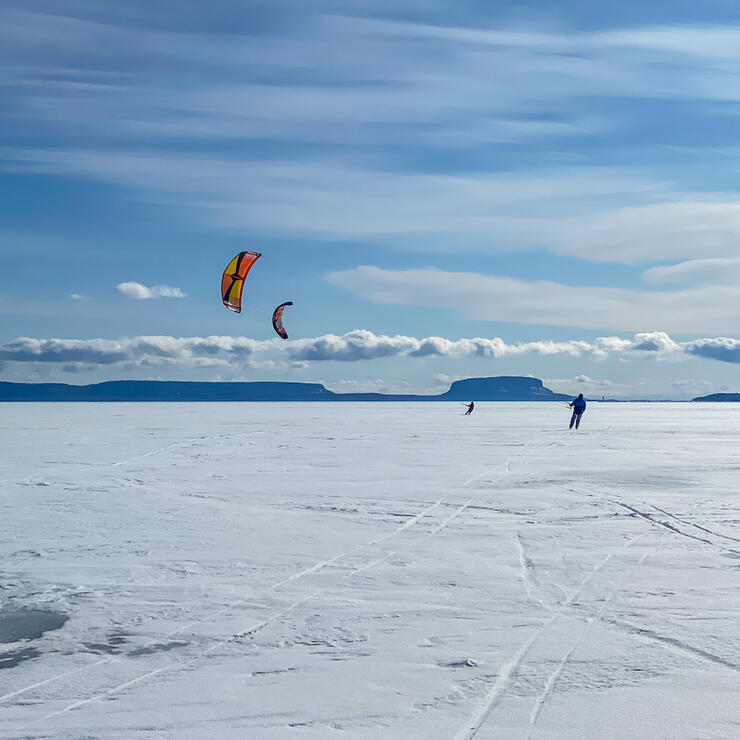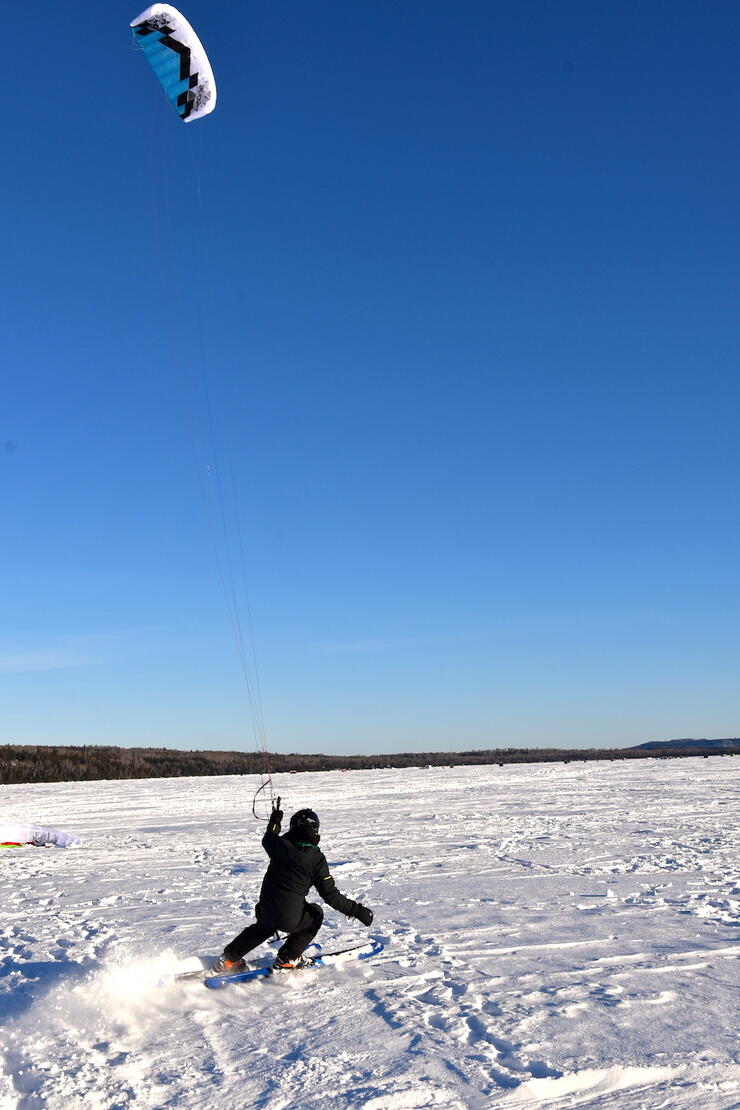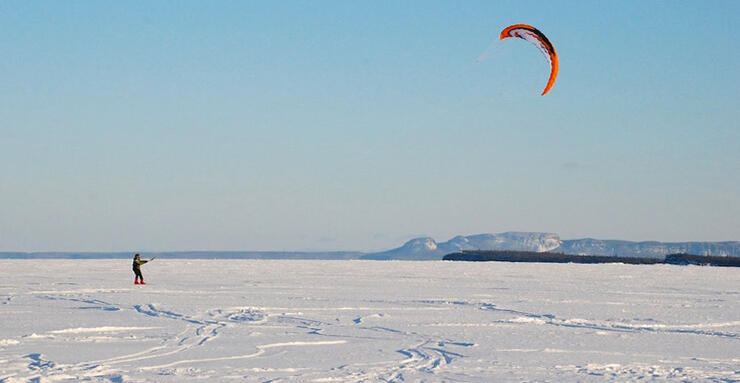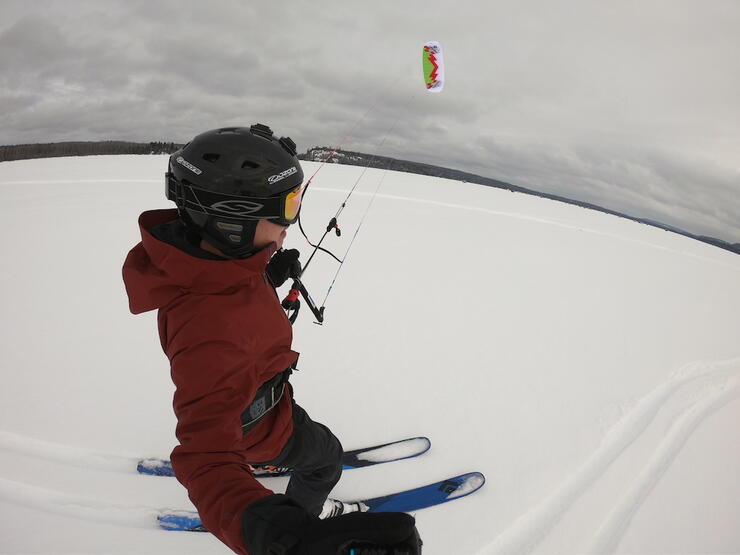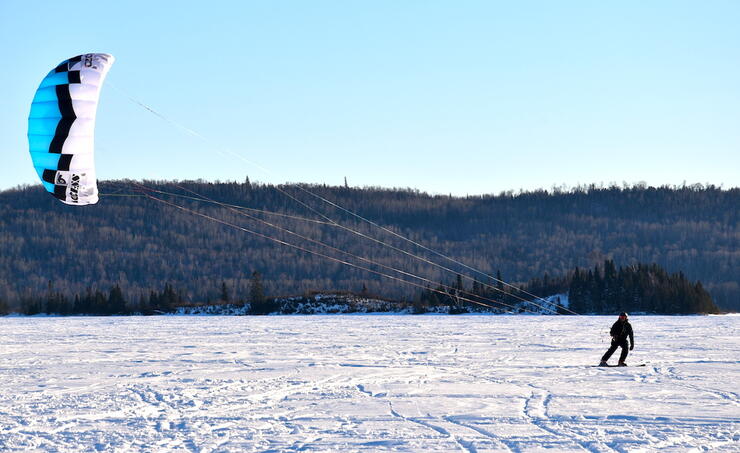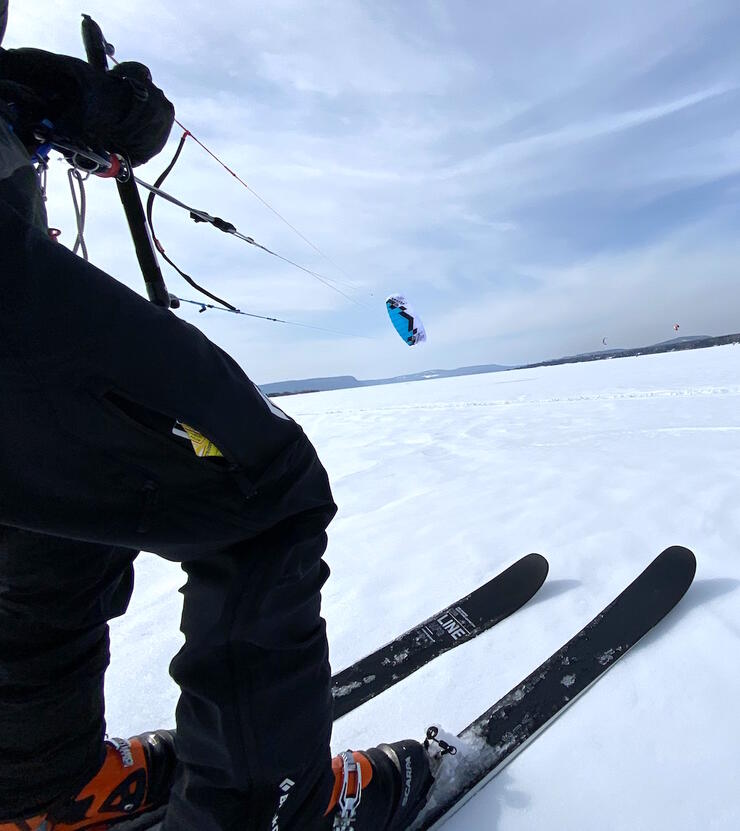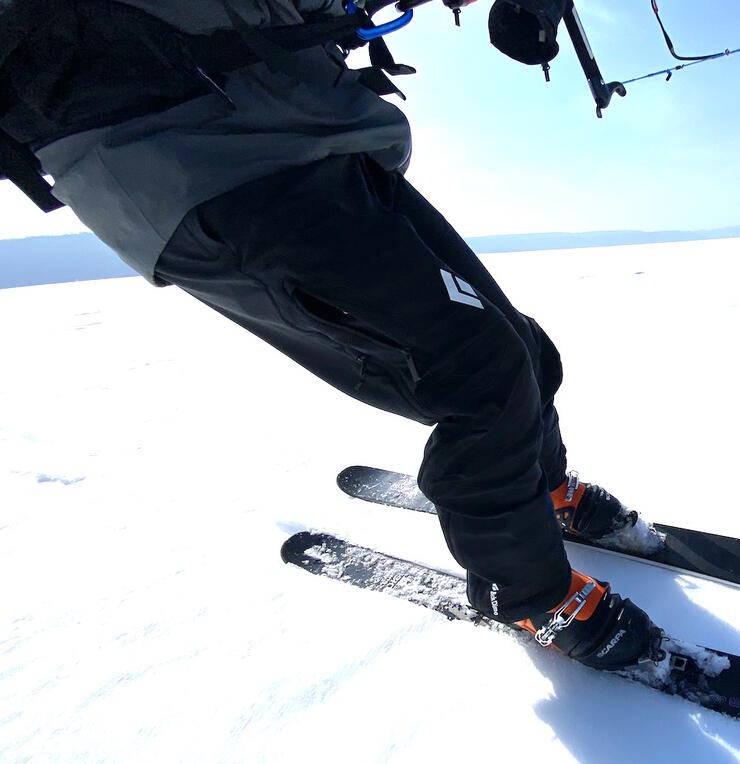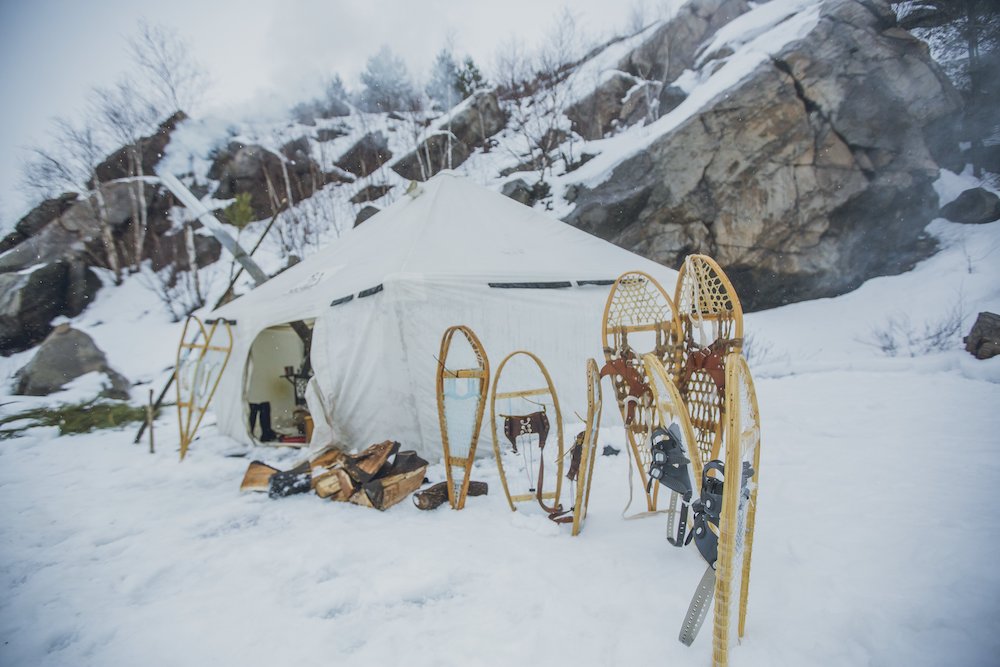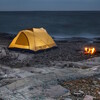
Everything You Need To Know About Snowkiting in Ontario
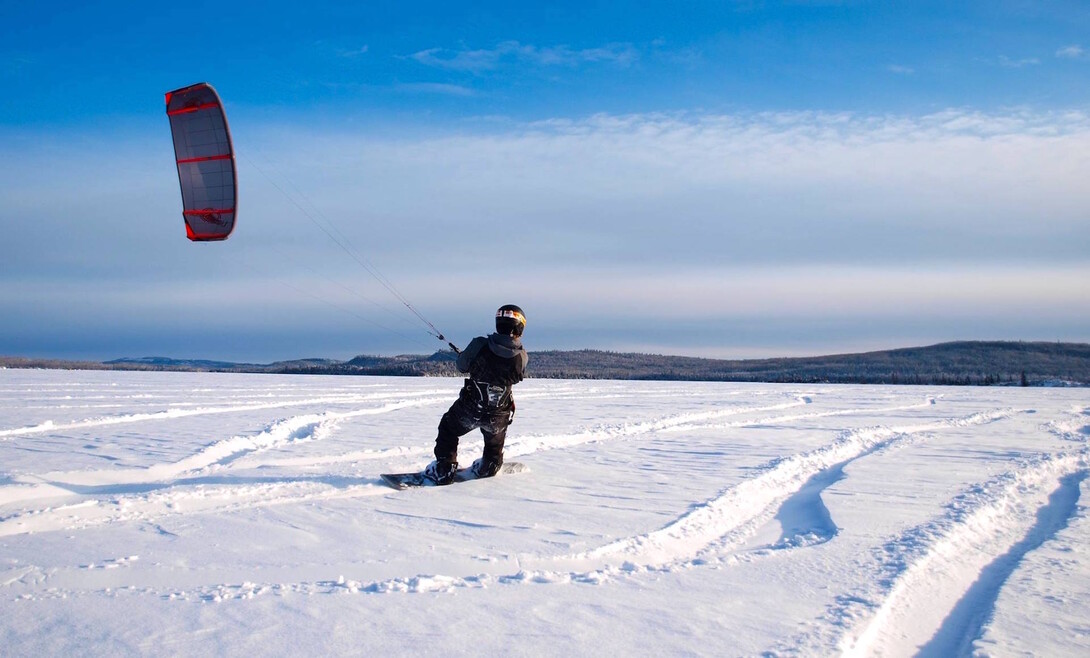
The adventurous business magnate Sir Richard Branson called snowkiting one of the greatest sports in the world. Former Prime Minister Jean Chrétien proved its extreme image had a more accessible side when he gave it shot at 79 years old.
The sport of kiteboarding is often associated with the wide sandy beaches of the tropics where warm water and consistent onshore winds are as reliable as your next margarita.
However, it’s among the ice shacks of Northwestern Ontario’s frozen lakes where you will find some of the most ideal locations in Ontario for enjoying the winter version of the sport of kiteboarding–snowkiting.
Snowkiting is an outdoor adventure windsport that combines the skills from skiing and snowboarding with sailing to glide over frozen, snow-covered lakes and open fields. Snowkiters transfer the power of the wind to cover great distances on snow-covered lakes and large fields, or to take big air, and even travel uphill. Snowkiting has a strong following in the countries of the world that enjoy long, snowy winters where low temperatures cause lakes to freeze.
Read on to discover the best places to snowkite in Ontario, where to find rentals and lessons, and the basics of how to snowkite.
Snowkite Gear Rentals and Lessons in Ontario
Learning to snowkite is a great introduction to kiteboarding, and vice versa, as kite flying is 80 percent of the learning curve with board skills making up the rest. Because there are fewer certified snowkiting instructors, it’s easier for many to start with kiteboarding and then transfer their skills to snowkiting.
Since kiteboarding will get you up to speed to technique and safety skills, try these shops for lessons and rentals: Superior Kiteboarding offers kiteboarding lessons, rentals and sales in Thunder Bay. Kite Rider, located in Sauble Beach, offers camps, lessons and rentals.
Toronto Kite Club offer snowkiting lessons in Barrie, Keswick and north Toronto depending on conditions. iKite.ca offers snowkiting lessons on frozen Lake Simcoe, and also travels around the Southern Ontario snow-belt chasing the wind and snow in Collingwood, Wasaga, Georgina, Beaverton and other areas.
Those who prefer a DIY approach should proceed with caution. Never underestimate the power of the kite. Start with a small two- or three-line trainer kite to get the basics of kite flying, taking off and landing. Full competence is required before moving on to larger kites which will get you moving on skis, typically those greater than three square metres.
Best Places To Snowkite in Ontario
Snowkite at Black Bay, Lake Superior
The north shore of Black Bay, located in the Lake Superior National Marine Conservation Area (NMCA) is typically the first part of the Great Lakes to freeze. The bay is over 70 kilometres long and its consistent winds and enormous fetch make it one of the best places in Canada for snowkiting. Access is from the Hurkett Cove Conservation Area in the Township of Dorion.
While you’re there: A great option for accommodation is Beyond the Giant Nature Retreats, located further down the bay towards the entrance of Sleeping Giant Provincial Park, which offers excellent fatbiking, cross country skiing and snowshoeing.
Snowkite at Mission Island Marsh, Lake Superior
Locally known as “The Mish,” this urban kiting oasis is the most popular summer location in Northwestern Ontario. The shallow water often freezes well enough by February for kiteboarding. The short season ends with the arrival of icebreakers in early March. Access is from the Mission Island Marsh Conservation Area in the city of Thunder Bay.
While you’re there: Delta Hotels by Marriott Thunder Bay has the best view of the lake (and you can watch the wind from your hotel window) and the aptly named Windy Shores Café (2212 Sleeping Giant Pkwy) located in the former train station next door is a great place to grab a coffee and pastry before you head to “The Mish.” The south side of the city offers several excellent options for après-kiting food and drinks (such as Madhouse in the Bay and Algoma neighbourhood and Red Lion Smokehouse which is a stone's throw from the waterfront hotel).
Snowkite at Whitefish Lake
Notorious among the first lakes in the region to freeze enough for ice fishing, Whitefish Lake is a very large, round shallow lake. With easy access from the boat launch, there is plenty to explore. Feeling adventurous? Snowkite 10 kilometres across to the southwest shore to ice climb a hidden gem. Access is via Highway 588, southwest of the city of Thunder Bay.
Snowkite at Lake Nipigon
As the 32nd largest lake in the world, Lake Nipigon is also the largest lake entirely in Ontario. Known for producing the world largest trout, it is a choice location as a training ground for arctic explorers residing in Minnesota. It’s long and sandy eastern shoreline is a popular destination for locals. Access is via Highway 580, east of Beardmore in the Municipality of Greenstone.
While you’re there: The Victoria Bed & Breakfast in nearby Geraldton offers cozy accommodations while the understated Cindy’s Diner in Beardmore offers excellent home-cooked meals. Greenstone is a sprawling municipality that includes the towns of Geraldton, Longlac, Nakina and Beardmore and an expansive area of unspoiled wilderness.
Snowkite at Abram Lake, Sioux Lookout
With plenty of snow and more lakes than land, Sioux Lookout has a strong kiting community. Abram Lake is only about eight kilometres from town and, like many Northwestern Ontario lakes, has exceptional fishing—bring your auger and rod. Access is via Highway 72, south of Sioux Lookout.
While You’re There: The Sioux Lookout Inn & Suites offers comfortable rooms and a pool for soaking sore muscles and the Wellington Centre has excellent pizza and a relaxed vibe. If you are coming from the west, be sure to stop in Vermillion Bay at the quaint Comfort Table Bakery on Highway 11.
How Do You Snowkite?
The Equipment You Need To Snowkite
Snowkiting utilizes the same basic equipment as downhill skiing or snowboarding, specifically: skis or a snowboard, ski or snowboard boots, winter clothing and an approved helmet. Specialized equipment includes a harness, four-line kites, lines and a control bar. Optional equipment includes an ice screw, shovel and sled to haul gear.
Two Types of Sails for Snowkiting
Snowkiters often own a variety of kite sizes (from seven up to 17 square metres) depending on the intensity of the wind, amount and type of snow cover as well as the weight of the rider. Snowkiters can choose from two different types of sails: leading edge inflatable kites and traction foil kites. Inflatable kites can be used on water or on snow. The leading edge must be pumped up with air which provides the kite a rigid wing shape that can also float on water - these are the same kites you see on beaches worldwide. The disadvantage is that it takes time to inflate the kite, and once inflated, the kite is ready to fly and more difficult to launch and land solo.
Foil kites are similar to paragliders. They require air passing through two layers of ripstop nylon to provide the rigid wing shape—no need to pump it up. The more efficient wing design means they pack up small and can be stored with the lines attached. These kites are the only choice for long distance winter expeditions including those used to reach the north and south pole. They can easily be launched and landed solo. Foil kites are rarely used on water. Once wet they are difficult to relaunch.
Taking Control of Your Snowkite
In either case, the kites are attached to a control bar using four lines typically 25 metres long. The kites can be controlled by pulling in the bar to increase power (pushing out to decrease). Pulling in one side pivots the kite in that direction (pull left, turn kite left), similar to steering a shopping cart.
The Safety Release on Your Snowkite
The control bar is attached to your body using a kite harness which is similar to a climbing harness. Kite design and safety has improved dramatically over the years. Kite manufacturers use two standard safety releases to disconnect the user from the kite. One releases one set of lines from the harness, which causes the kite to “flag out” resulting in the kite falling from the sky. The second safety releases the remaining two lines from the bar (used rarely to avoid the kite flying away uncontrollably).
Plan your Snowkiting Adventure Now
Snowkiting is an outdoor adventure windsport that combines the skills from skiing and snowboarding with sailing to glide over frozen, snow-covered lakes and open fields.
Recommended Articles

Crown Land Camping
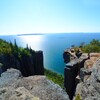
11 Jaw-Droppingly Beautiful Landscapes
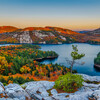
Natural Highs
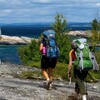
Backpacking Trails in Ontario
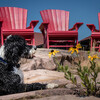
Dogs Welcome!
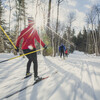
Best Cross Country Ski Spots
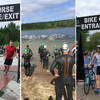
2025 Triathalons

Dog Sledding in Ontario
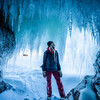
Plan Your Adventure
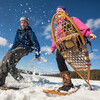
Want to go snowshoeing?
9 of the Most Beautiful Fall Destinations
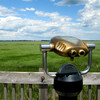
Ontario Birding Checklist
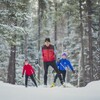
Rise and Glide

Go Foraging in Ontario
Tom Thomson Self-Guided Tour
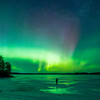
Best Northern Lights Destinations
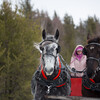
Bundle up for Snowy Horseback & Sleigh Rides

Best Winter Getaways in Ontario
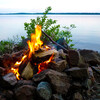
6 Best Places To Camp On Manitoulin
